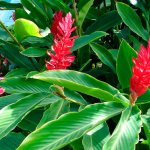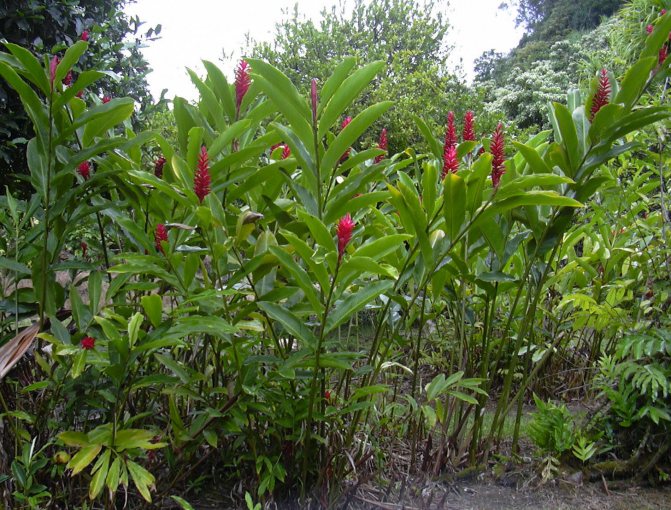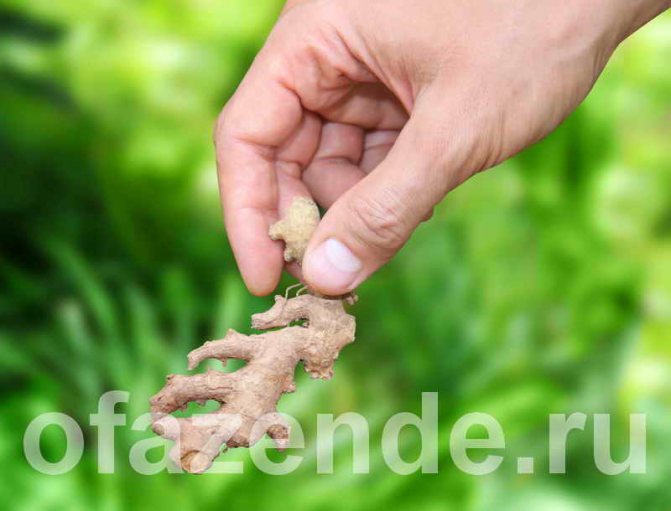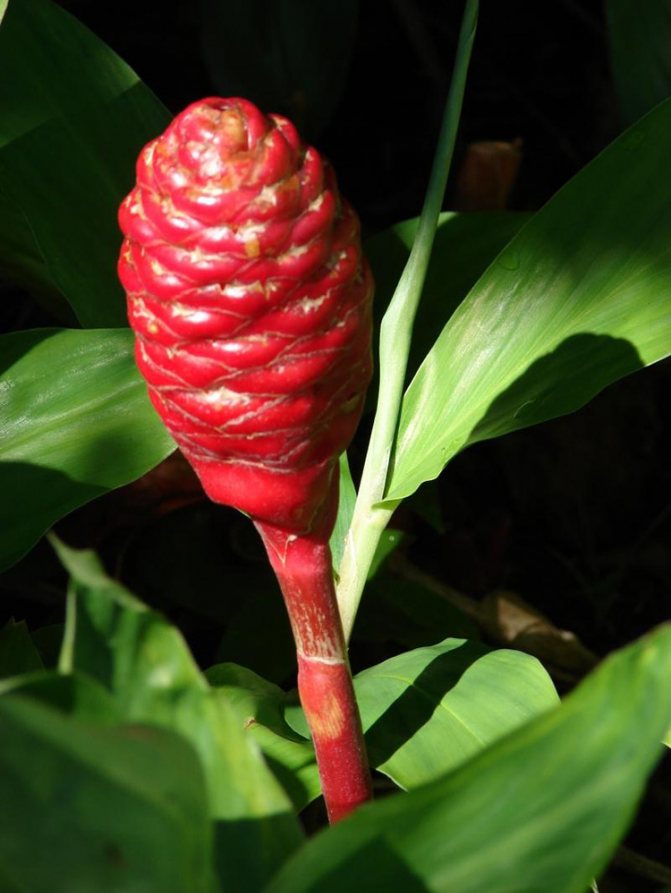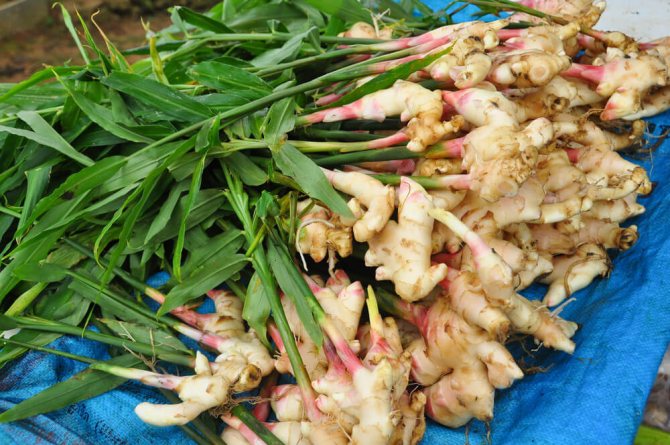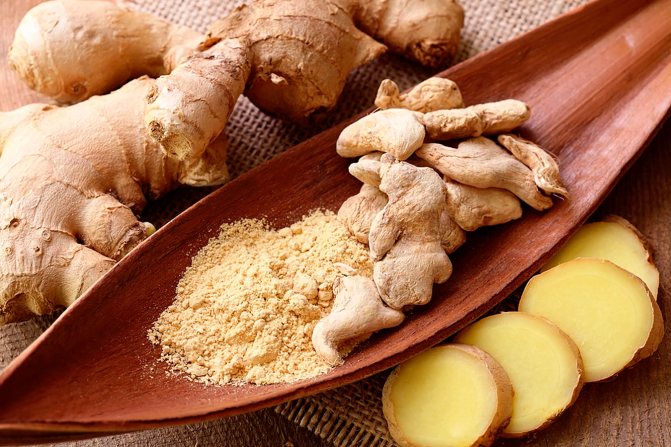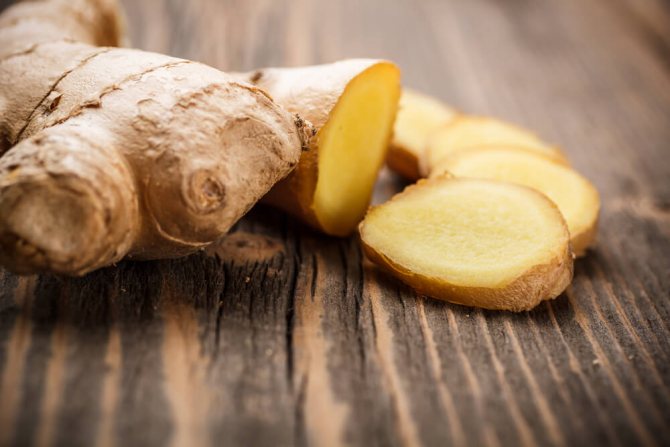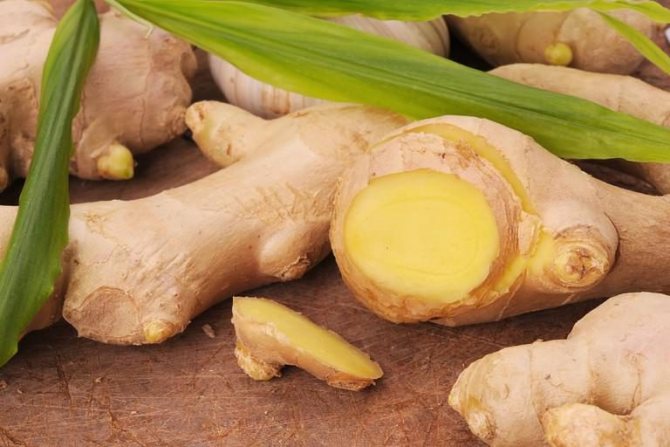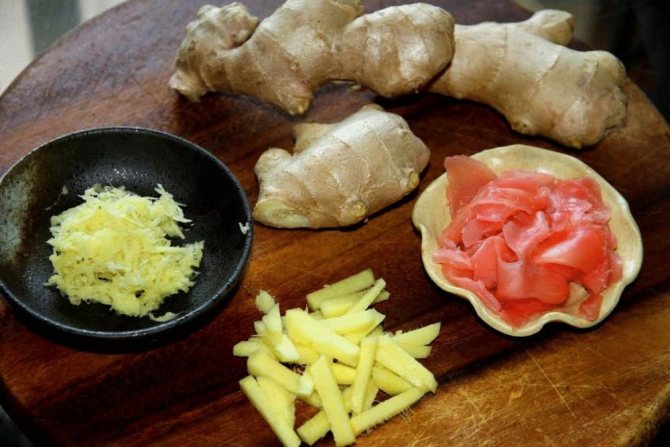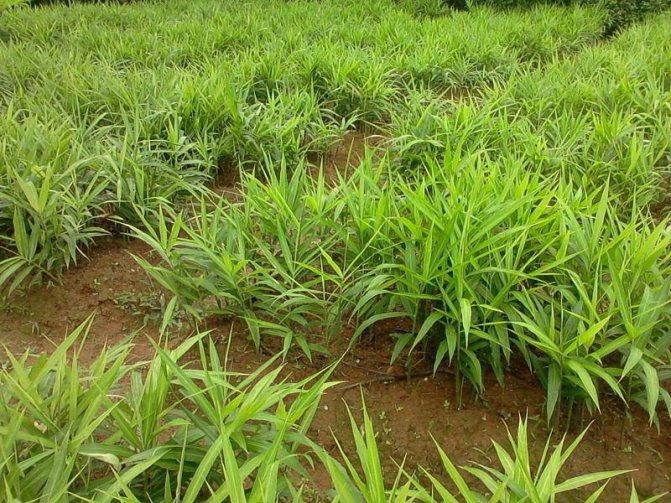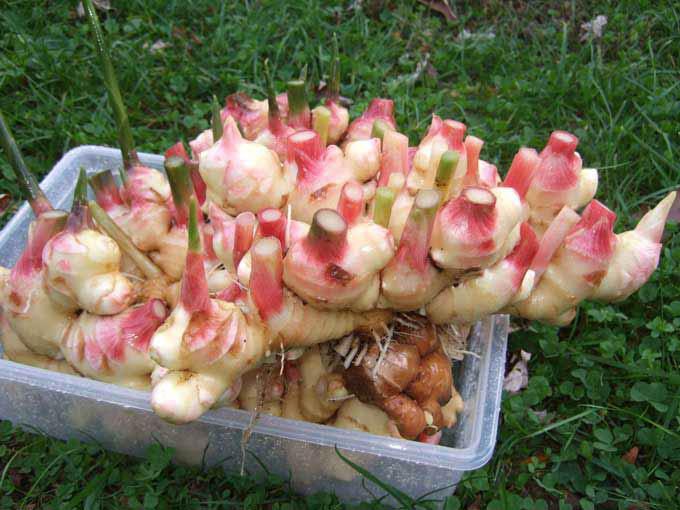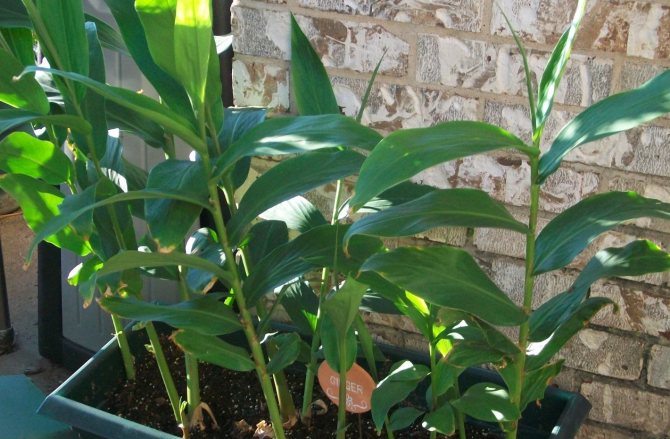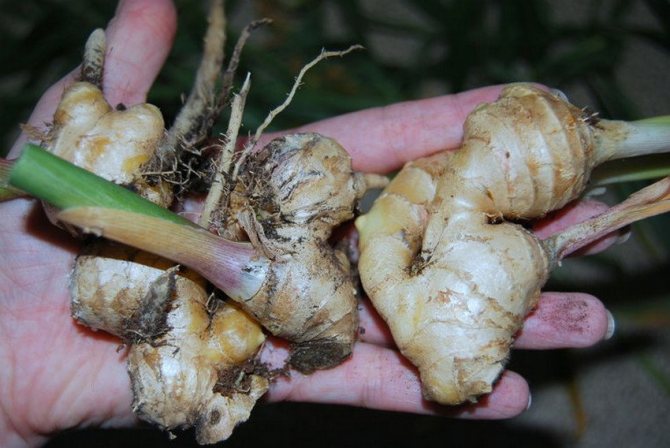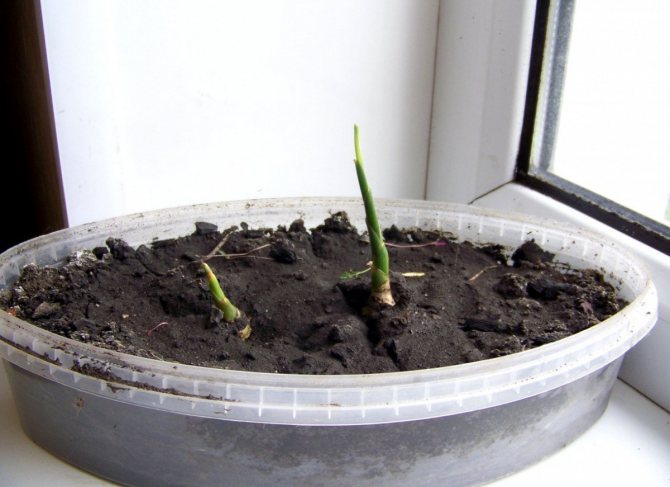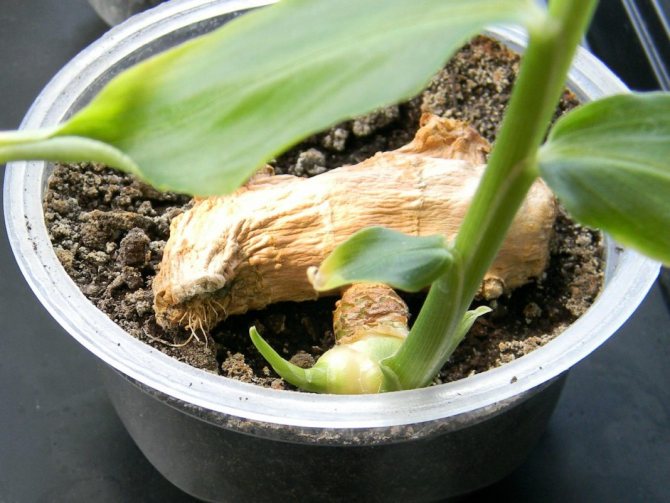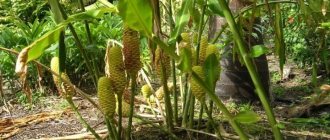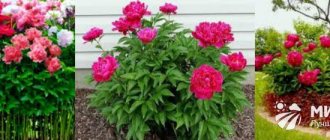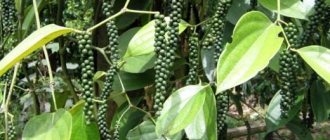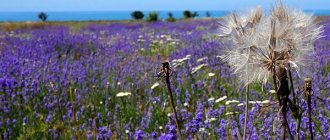Modern supermarkets offer customers a lot of vegetables and fruits, not only from the Russian expanses, but also brought from the other end of the world. During transportation, the fruits lose nutrients, and people want something straight from the tin.
The same can be said for ginger root, which looks unattractive on the counter. How to grow ginger at home is of interest to many avid gardeners and gardeners.
What is this plant?
Ginger is a medicinal perennial plant of the ginger family, of which the root is the edible part. The aboveground part of the plant resembles sedge grass. Initially, it only grew naturally in Western India and Southeast Asia.
Ginger is quite common in countries with tropical climates - Japan, Vietnam, Brazil and Argentina. The closest relatives of ginger are cardamom, turmeric, tulip and ginger lily.
In the wild, ginger now practically does not grow. This is a typical garden crop.
The plant has lanceolate leaves, long and strong stems up to 1-1.5 m tall. Peduncles up to 30 cm long with small leaves.
The flowers are collected in the apical ears and are located in the axils of the bracts. Ginger is a flowering plant, but never bears fruit. The plant reproduces by roots, powerful and tuberous. The fact that the ginger is ripe is indicated by the falling leaves.
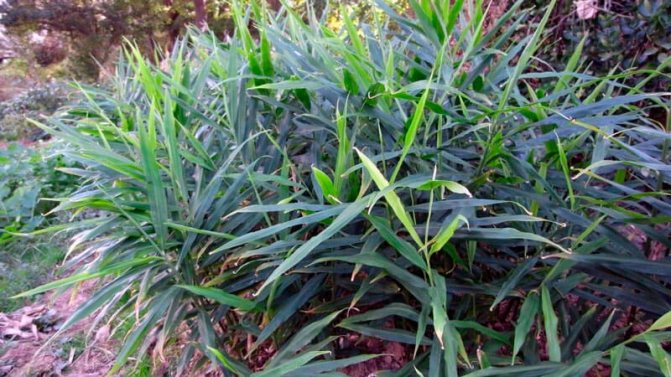
Useful properties of ginger and contraindications
The beneficial properties of ginger have been known for a long time. It is beneficial and helps to cope with many problems, which include:
- Flatulence and diarrhea.
- Food poisoning, even mushrooms.
- Inadequate digestion of food - excellently prevents the accumulation of toxins in the intestines, which only poison the body.
- Getting rid of helminths and other parasites.
- Oral pathology.
- Skin diseases and manifestations of allergies.
- Reducing cholesterol.
- Improving the condition of blood vessels and preventing the formation of blood clots.
- Boosts immunity.
- Relief from pain in joints and muscles, from swelling and stretching.
- Reducing stomach cramps.
Ginger helps women recover from infertility. Relieves cramps during menstruation.
The harm and contraindications of ginger, despite its benefits, are also present, like any plant. Application restrictions include:
- With a sore throat and a cold, if there is a fever, ginger cannot be treated - it can provoke a rise in temperature even higher.
- Ginger is contraindicated for gastritis, stomach ulcers and duodenal ulcers, because the spice irritates the mucous membrane. It is also forbidden to take it for oncology - it helps to accelerate tumor growth.
- Ginger is contraindicated in liver diseases and cholelithiasis - it has choleretic properties.
- Ginger root thins the blood. But it should be taken with caution with frequent nosebleeds, hemorrhoids.
- The seasoning increases the pressure.
- You can not use the spice at night - it can provoke insomnia.
It is forbidden to take the seasoning in the second half of pregnancy and while breastfeeding. The spice juice passes into breast milk and prevents the baby from sleeping.
How does ginger grow in nature?
Where is the ginger root for sale in all countries of the world grown? Huge plantations of medicinal and common plant varieties are found in India. Ginger loves humid tropical climates and lots of ambient light. It needs high temperatures and seasonal rainfall in the tropics. It is this combination of climatic conditions that makes it possible to obtain huge yields of a valuable and useful root.
Where does ginger grow today: it can be found on all continents, even in Africa, but there it is grown for their own purposes. But the French and Dutch grow ginger right on the balcony and enjoy the pleasant aroma of a young plant.
In the vastness of Russia, you will not find ginger plantations either; it is grown on personal plots and at home in pots as an annual plant.
You can grow ginger on your site, but you should not hope for a high yield. It is required to plant it in an open sunny area with a low groundwater level. Any soil is suitable for him. On the dug area, it is necessary to make grooves 15 cm deep. In these grooves it is recommended to plant ginger rhizomes, cut into pieces with already swollen buds. Planting material should be planted at a distance of 30 cm from each other.
Seedlings are similar to the leaves of reeds, the same pointed leaves. It is recommended to weed, loosen and water the plants all summer long. We should not forget about feeding. Since the root of the plant is eaten, it is fertilized with organic fertilizing, for example, infusion of mullein. From the moment of planting to harvest, it takes about six months. Yellowed leaves serve as a signal for readiness. The dug roots should be dried under a canopy.
Ginger at home. Video:
When ginger blooms
The plant blooms in the second year under natural conditions or in the third year in greenhouses in compliance with the climatic regime. One or more flowers may appear depending on the variety. The color is from yellow to pronounced scarlet.
Features of harvesting
10 days before harvesting, it is necessary to stop moistening so that the plant dries up and bends to the soil. The bush is removed along with a lump of earth, the soil is slightly shaken off the rhizome. Then the planting root is removed, the stems are cut off and the tubers are washed with water. Ginger can be eaten immediately or prepared for storage while maintaining its meatiness, firmness and moisture.
Ginger: home cultivation
Growing ginger root at home is easy. Simple care of him and rare disease lesions allow him to grow at home in a pot.
Insects are frightened off by the harsh scent of the plant, so they do not attack it. Ginger reproduces only by dividing the rhizome.
The ginger family consists of 140 species, but not all of them are suitable for indoor cultivation. Breeders have bred many varieties that differ in the shape and size of the roots, their color and smell. But the main feature that divided all varieties into two groups is its pungency. There are two groups of varieties:
- Black, or Barbados, has a pungent taste and a pungent odor. It does not need to be cleaned, it is enough to wash it with boiling water and dry it in the sun.
- White, or Bengali, has a slightly spicy taste. Cleaning and drying required. Cleaning on an industrial scale is carried out with sulfurous acid, its weak solution.
Belonging to different groups does not affect the conditions of their cultivation and maintenance. The choice of the variety should be based on the taste of the root. To grow ginger from the root at home, you need to provide it with the right atmosphere.
How to grow ginger at home on a windowsill?
Ginger is grown in an apartment for the sake of a healing root or its beautiful flowering. If a crop is expected, then do not let the plant bloom.
As an ornamental plant, it also looks original. Reaches a height of one meter and blooms with beautiful inflorescences. It is necessary to plant roots in pots at the very end of winter, so that the growing season falls in the summer.
First you need to buy planting material, this is done shortly before planting. Then carry out the following activities to prepare the ginger for planting:
- How to choose a root for planting. It is necessary to take a root with smooth skin, not wrinkled. It should not be lethargic and should have buds like a potato tuber before planting. The more of these "eyes", the more shoots will come out of the root.
- Disinfection. Since ginger is brought from afar, it is treated with chemicals beforehand. To remove them, you need to soak the roots in water for two days. And to eliminate the infection, add a few crystals of manganese or baking soda to the water (at the rate of a teaspoon of soda in a glass of water).
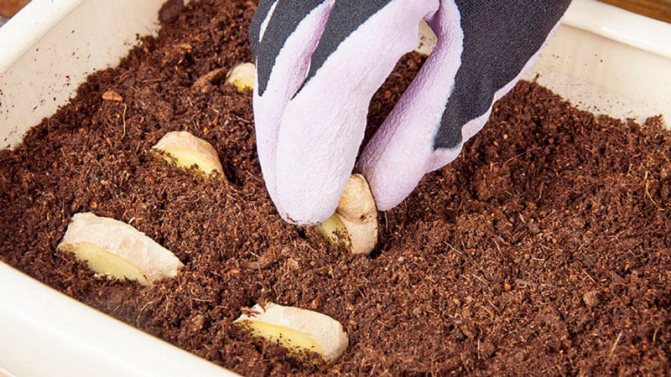

- Soil preparation. Ginger can be grown in plain soil or wet moss can be used. It is better to take sphagnum moss for indoor cultivation. You can take ordinary soil from the garden. You can prepare a mixture: 3 parts peat and part clay.
- Planting pot. Ginger has such a feature - its roots do not grow in depth, but along the surface of the soil. The best container for ginger is a shallow but wide box or pot. If you grow ginger for flowering, then they take a small pot, then all forces will be directed to the development of the stem and flowers.
The preparation of the root for planting also includes the stage of awakening the kidneys. If the roots, prepared for planting, do not have "eyes", then in order to accelerate germination, they must be awakened.
This takes anywhere from three days to two weeks. There are two ways to present an event.
In raw moss
A tall container is taken and lined with moss. Ginger roots are placed on it, buds up. It is recommended to put another thin layer of sphagnum on top, pour everything over with warm water. Place the dishes close to the radiator on the windowsill.
In water
Place the roots for planting on wooden sticks and hang over a container of water so that the bottom of the root is in the water. Maintain the water level in the tank at all times.
After the sprouts are formed, the roots can be cut into pieces so that each of them has 2-3 swollen buds. Treat the slices with charcoal, and dry the nodules a little.
Ginger. How to plant at home? Video:
Growing problems, diseases and pests
Ginger is considered a crop that is resistant to parasites and various diseases. When growing a plant, you can encounter such a pest as a spider mite. They recognize him by the specks on the yellow foliage and the pallor of the stems. To make the web more visible, it is recommended to irrigate the crop.
How to get rid of spider mites:
- The plant should receive a lot of moisture and humidification of the air. The problem often arises from lack of drainage. The foliage should be periodically washed with water under the shower, wrapping the root system and flowerpot with a plastic bag.
- The most effective method of pest control is the use of insecticides. It is required to process the culture once a week. Sticks that are placed in a flowerpot do not work against a tick.
Important! If the spice is eaten, it is better not to use insecticides, but simply rub the leaves with alcohol.
Ginger helps to cope with colds, gives a special taste to food, and its oil will improve the condition of the skin. A universal product is purchased in a store, but planting on its own guarantees its high quality and environmental friendliness. Before growing, you need to know the rules for choosing a root and care, breeding methods, how ginger grows, flowering time and what problems you may encounter.
How to plant ginger?
The prepared planting material must be properly planted in the ground. To do this, you must go through the following landing stages:
- Drainage system. To prevent moisture from stagnating in the pot, it is necessary to make drainage, for which expanded clay or pieces of foam are spread on the bottom of the container.
- Ground laying. On top of the drainage, soil is poured or moss is placed. This is done exactly two-thirds of the pot. Then it needs to be moistened, but not poured. It is better to use a sprayer for moisturizing.
- Planting ginger. Planting material is laid out on the ground with seedlings upward.
- Backfilling with soil. Be careful not to damage the sprouts, cover the roots with soil or lay out the moss. The top layer should not be high - no more than 3-5 cm.
After falling asleep, moisten the soil again and place the dishes in a dry place where the air temperature is about 18-20 degrees.
Planting Tips for Ginger
When planted in early spring or late March, harvest is harvested. Drainage is poured into the prepared pot, then the soil disinfected with Fitosporin. The root tuber is placed horizontally with the buds of growth upward, not in the middle, but on the side. Deepen by 3 cm, fall asleep a little, water. Cover with foil, plastic bottle. Then slightly moisten the soil. Sprouts appear in 2-3 weeks. The container is placed in a room with a temperature of +20 ° C.
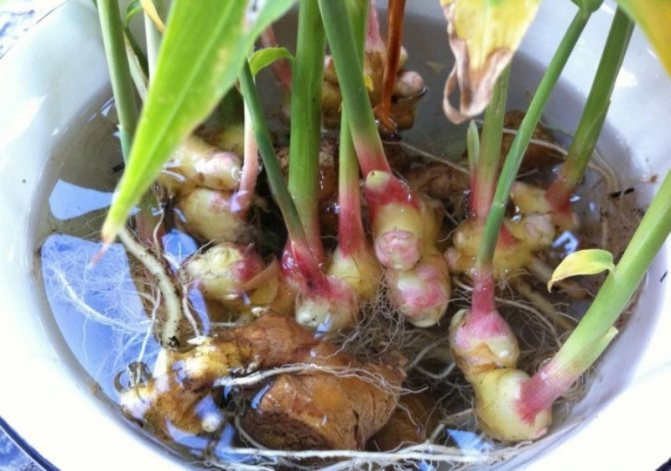

Ginger Care
Usually, ginger sprouts appear after two weeks. To grow a healthy plant, it is necessary to create conditions close to natural conditions.
Indoor temperature
During the period of germination of ginger roots, it is necessary to maintain a room temperature of up to 20 degrees, but not lower than 15. During active growth, and it happens in summer, it is necessary to ensure a high temperature - 28-32 degrees.
Ginger does not tolerate a sudden change in temperature, as a result of which the plant may simply not survive.
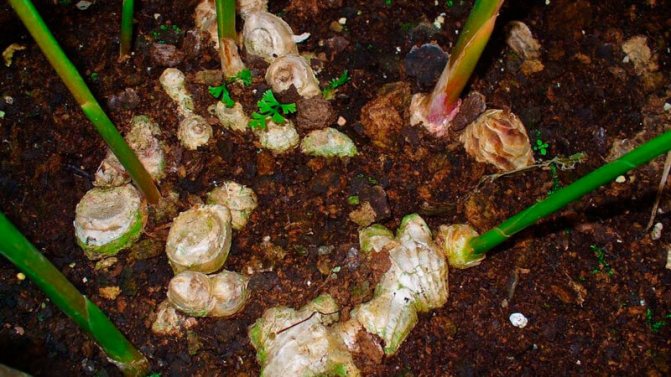

Air humidity
Since the plant is tropical, it loves humid air. It should be moistened with a spray bottle daily. In autumn, when the leaves turn yellow, spraying should be stopped.
Lighting
Ginger loves light, but cannot stand direct sunlight. They can cause real burns to the leaves. For a container with a plant, it is better to choose an east or west window sill in an apartment.
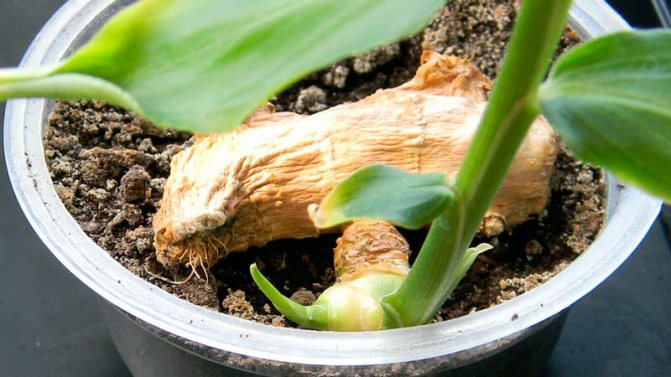

Watering
Ginger requires constant soil moisture, it needs to be sprayed, but not poured. The water from the pallet must be poured out immediately. But it is also dangerous to dry out the soil, especially during the period of active growth. If there is not enough moisture, the leaves wrinkle and fall off.
If there is an overflow, then the leaves begin to turn yellow. Watering is necessary with soft, settled water at room temperature. After the soil has been moistened, it must be loosened.
Fertilizers
After sprouting, the plant must be fed with mullein solution every 2 weeks. If there is no such feeding, you can use mineral fertilizers. From the end of summer until late autumn, it is required to make potash dressings, alternating them with organic ones.
Pay attention to this material - Yucca: home care, reproduction and transplantation.
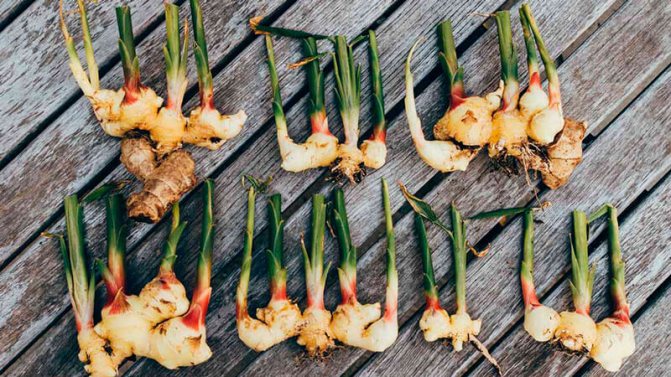

Pruning
Pruning the plant is necessary if the ginger is grown for the root. This is necessary so that more power goes into his education.
You will be interested in this article - Nolina: Home Care. Growing bokarnei from seeds.

